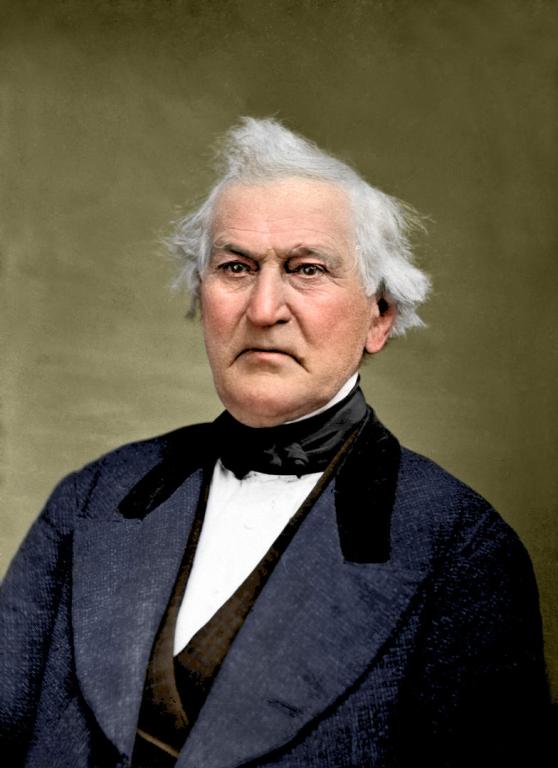
From an as-yet incomplete manuscript:
It is worthwhile examining the contrasting character of the experiences reported by the Three Witnesses and the Eight, since, I believe, their very difference reinforces them.[1] First of all, the experience of the Three, as they report it, was suffused with the glory and power of God. In a brilliant light, an angel came down and showed them the plates. They heard the voice of God testifying that the translation had been accomplished “by the gift and power of God.” Their written testimony is characterized by a marked religious or spiritual tone. It might be termed a supernatural or miraculous testimony.
By contrast, the experience of the Eight involves no glory, nothing miraculous. It is as matter of fact as something can be. No angel shows the plates to them; Joseph Smith does. There is no miraculous light. Unlike the Three, who seem simply to have observed the plates in the hands of the angel, the Eight handle the plates and turn their pages. They “hefted” them. The language of their official account is cool and even formal or legalistic to the point of emotional distance (“the said Smith”). God figures in their testimony only as witness to their concluding oath. His voice does not testify to the correctness of the translation.[2] The Eight Witnesses are manifestly in full possession of their senses and mental faculties. Theirs might be labeled an ordinary or natural testimony.
Why the differences? In order, I think, for the task of skeptics to be rendered more difficult. One might be tempted to dismiss the testimony of the Three, with its spectacular divine accompaniments, as hallucinatory (however untenable that dismissal would be). A devout naturalist might wave it aside as mere superstition. (Conspiracy or collusion between Joseph Smith and the Witnesses we have already seen to be extremely unlikely.) By contrast, there is absolutely nothing in the testimony of the Eight that points to superstition or hallucination. It is the most matter-of-fact kind of experience—nine men in the woods in the early afternoon—except for the object at the center of it. On the other hand, if one were to approach the Witnesses first by way of the Eight and one were inclined to skepticism, one might be tempted to write their experience off as deception by Joseph Smith and/or some other conspirator or group of conspirators. There must really have been plates—fabricated to deceive.[3] But this doesn’t account for the testimony of the Three, which goes beyond fabrication. In other words, a single explanation seems unable to account for the two very different kinds of experience. This means that skeptics who wish to explain the two testimonies away must resort to some unlikely combination of sincere hallucination, already unlikely in and of itself, and deliberate, insincere fabrication. As Richard Lloyd Anderson points out, “The supernatural power of the angel’s visit to the Three Witnesses finds its physical foundation in the fact that eight ordinary men insisted all of their lives that they had carefully examined and handled the ancient plates of the Book of Mormon.”[4]
[1] My analysis here was inspired by that of B. H. Roberts, A Comprehensive History of the Church of Jesus Christ of Latter-day Saints, 1:148-155.
[2] Later, quite in keeping with the character of the testimony of the Eight Witnesses, which refuses to go beyond what it can see and touch, John Whitmer, who had left the Church, insisted that he could not certify that the plates had been translated correctly, because it was beyond his capacity to do so. (Source?) But he never denied seeing and handling them.
[3] Forgery is the virtually certain explanation for the two sets of inscribed metal plates that James Jesse Strang said he had found in Wisconsin and Michigan (between 1845 and 1849) and translated. Strang, who claimed to have a letter of appointment from Joseph Smith, announced himself as Joseph Smith’s successor and was clearly seeking to imitate the Prophet. That his plates really existed is beyond serious dispute. The first set, the three “Voree” or “Rajah Manchou” plates, were dug up by four “witnesses” whom Strang had brought to the appropriate site. Inscribed on both sides with illustrations and “writing,” the Rajah Manchou plates were roughly 1.5 by 2.75 inches in size—small enough to fit in the palm of a hand or to carry in a pocket. Among the many who saw them was Stephen Post, who reported that they were brass and, indeed, that they resembled the French brass used in familiar kitchen kettles. “With all the faith & confidence that I could exercise,” he wrote, “all that I could realize was that Strang made the plates himself, or at least that it was possible that he made them.” One source reports that most of the four witnesses to the Rajah Manchou plates ultimately repudiated their testimonies. (However, the credibility of this source is suspect, since it also asserts that the Book of Mormon witnesses repudiated their testimonies, which is demonstrably false). The eighteen “Plates of Laban,” likewise of brass and each about 7 3/8 by 9 inches, were first mentioned in 1849 and, in 1851, were seen by seven witnesses. Their testimony appeared at the front of The Book of the Law of the Lord, which Strang said he translated from the “Plates of Laban.” (Work on the translation seems to have begun at least as early as April 1849. An 84-page version appeared in 1851; by 1856, it had reached 350 pages.) The statement of Strang’s witnesses speaks of seeing the plates, but mentions nothing of any miraculous character, nor did Strang supply any second set of corroborating testimony comparable to that of the Three Witnesses to the Book of Mormon. One of the witnesses to the “Plates of Laban,” Samuel P. Bacon, eventually denied the inspiration of Strang’s movement and denounced it as mere “human invention.” Another, Samuel Graham, later claimed that he had assisted Strang in the fabrication of the “Plates of Laban.” The well-read Strang had been an editor and lawyer before his brief affiliation with the Church of Jesus Christ of Latter-day Saints and his subsequent career as a schismatic leader. See Roger Van Noord, King of Beaver Island: The Life and Assassination of James Jesse Strang (Urbana: University of Illinois Press, 1988), 33-35, 97, 102, 163, 219; Doyle C. Fitzpatrick, The King Strang Story: A Vindication of James J. Strang, the Beaver Island Mormon [sic] King (Lansing, MI: National Heritage, 1970), 34-38; Milo M. Quaife, The Kingdom of Saint James: A Narrative of the Mormons [sic] (New Haven: Yale University Press, 1930), 2-8, 16-19, 92-93, 185-189. Thus, Strang’s plates were much less numerous than those associated with Joseph Smith, his witnesses saw nothing supernatural, his translation required the better part of a decade rather than a little more than two months, and, unlike the Witnesses to the Book of Mormon, Strang’s witnesses did not remain faithful to their testimonies. Milo Quaife, in his early, standard biography of Strang, reflected that “It is quite conceivable that Strang’s angelic visitations may have had only a subjective existence in the brain of the man who reported them. But the metallic plates possessed a very material objective reality.” If we are unwilling to accept The Book of the Law of the Lord as authentically divine, he says, “we can hardly escape the conclusion . . . that Strang knowingly fabricated and ‘planted’ them for the purpose of duping his credulous followers” and, accordingly, that “Strang’s prophetic career was a false and impudent imposture.” (Quaife, The Kingdom of Saint James, 17-18.) Roger Van Noord, Strang’s most recent biographer, concludes that, “Based on the evidence, it is probable that Strang—or someone under his direction—manufactured the letter of appointment and the brass plates to support his claim to be a prophet and to sell land at Voree. If this scenario is correct, Strang’s advocacy of himself as a prophet was more than suspect, but no psychological delusion.” See Van Noord, King of Beaver Island, 274.
[4] Anderson, Investigating the Book of Mormon Witnesses, 147.
***
“Why Are Lehi’s First Visions So Similar to Much Later Apocalyptic Writings?”
“Nephite History in Context 3: Vered Jericho Sword”
Well, it had to come someday, I suppose. But it’s the end of an era:
https://byustudies.byu.edu/content/special-feature-121
***
This is an evangelical Protestant response to the current sexual-abuse crisis in the Catholic Church:
“Protestants Should Care Deeply about the Catholic Catastrophe”
With a few slight modifications, it’s also mine.












